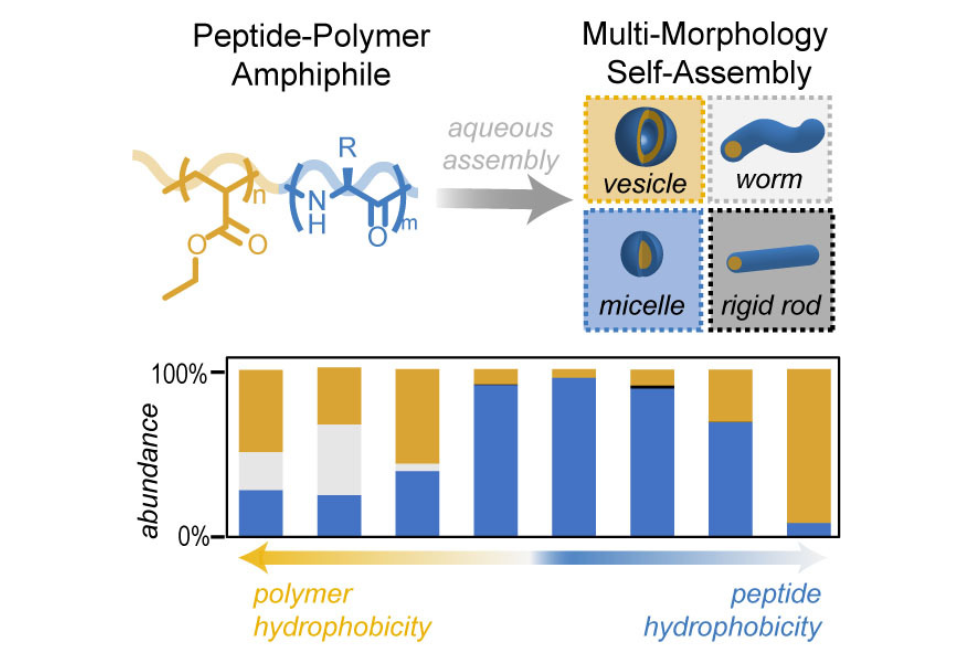Mapping the Morphological Landscape of Oligomeric Di-block Peptide-Polymer Amphiphiles
Abstract
Peptide-polymer amphiphiles (PPAs) are tunable hybrid materials that achieve complex assembly landscapes by combining the sequence-dependent properties of peptides with the structural diversity of polymers. Despite their promise as biomimetic materials, determining how polymer and peptide properties simultaneously affect PPA self-assembly remains challenging. We herein present a systematic study of PPA structure-assembly relationships. PPAs containing oligo(ethyl acrylate) and random-coil peptides were used to determine the role of oligomer molecular weight, dispersity, peptide length, and charge density on self-assembly. We observed that PPAs predominantly formed spheres rather than anisotropic particles. Oligomer molecular weight and peptide hydrophilicity dictated morphology, while dispersity and peptide charge affected particle size. These key benchmarks will facilitate the rational design of PPAs that expand the scope of biomimetic functionality within assembled soft materials.
Citation
Allen, B. P., Wright, Z. M., Taylor, H. F., Oweida, T. J., Kader‐Pinky, S., Patteson, E. F., Bucci, K. M., Cox, C. A., Senthilvel, A. S., Yingling, Y. G., & Knight, A. S. (2022). Mapping the morphological landscape of oligomeric di‐block peptide–polymer amphiphiles**. Angewandte Chemie, 134(14). https://doi.org/10.1002/ange.202115547


